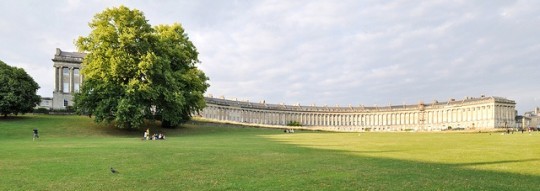|
 |
|
|
Bath is one of
the world's great cities and its listing as a UNESCO World
Heritage Site confirms that its architectural beauty is
amongst the very best.
The
Royal Crescent was built between 1767 and 1775
to the design of John Wood the Younger, and
forms a semi-ellipse of thirty Grade I listed
houses arranged around a great Lawn. The famous
travel writer Jan Morris once wrote about it,
"It lies there in a shallow arc, its wide Lawns
running away beyond the Ha-ha down the hill
below, and all is suddenly space, and green, and
leisure. The Crescent is architecture on a truly
palatial scale and reminds many people of
Versailles". (Introduction to Bath: An
Architectural Guide, by Charles Robertson,
1975). Well-known architectural writer Nikolas
Pevsner wrote, “the conception of an open
composition was something new in town-planning,
and something very English, although the idea
came perhaps from Prior Park, that is the villas
of Palladio. It was here applied for the first
time to a terrace of houses, and moreover the
shape of the Crescent was here employed for the
first time.” North Somerset and Bristol,
Buildings of England series, 1958).
This site was created by
residents to promote and share the rich heritage of the Crescent and
provide useful information about not just its history but life on
the Crescent today. The site owes much to the rich heritage of the
Royal Crescent
Society and its archive and also willingness to share information about it significant
achievements since its formation in 1973. The site also shares the
achievements of the Crescent Lawn Company in its restoration of the
railings and Ha ha. No visit to the Crescent would be complete
without the unique insight to Georgian life and culture offered by
Bath Preservation Trust and the museum at No. 1.
We welcome all
contributions and comments to enable us to maintain this rich tapestry of
heritage.
|

